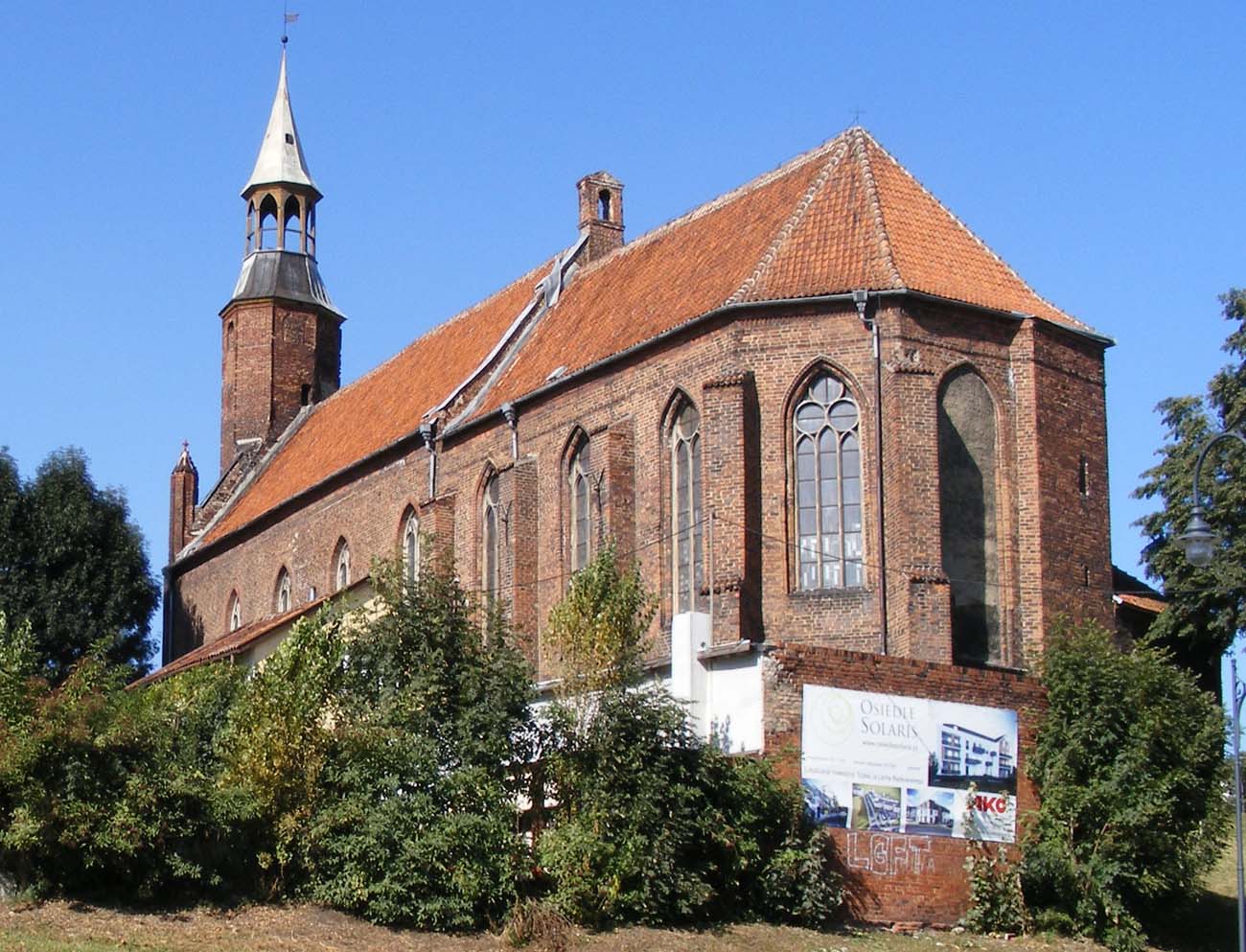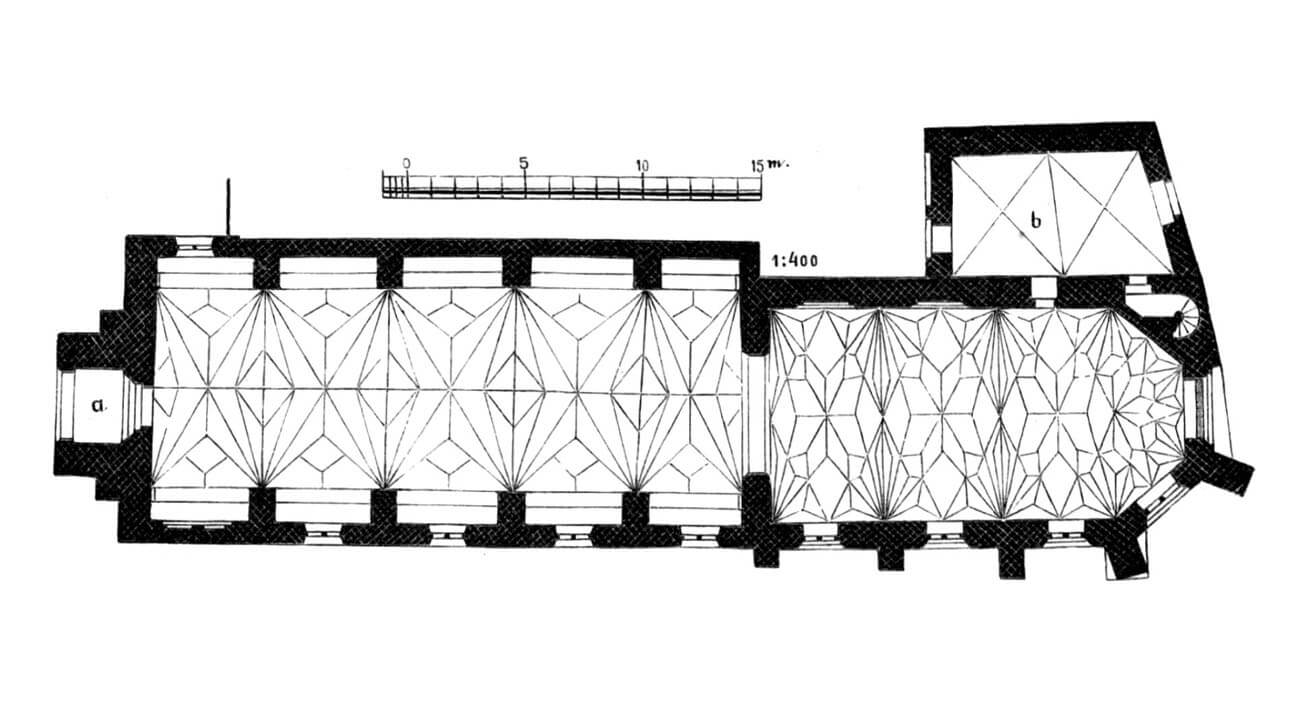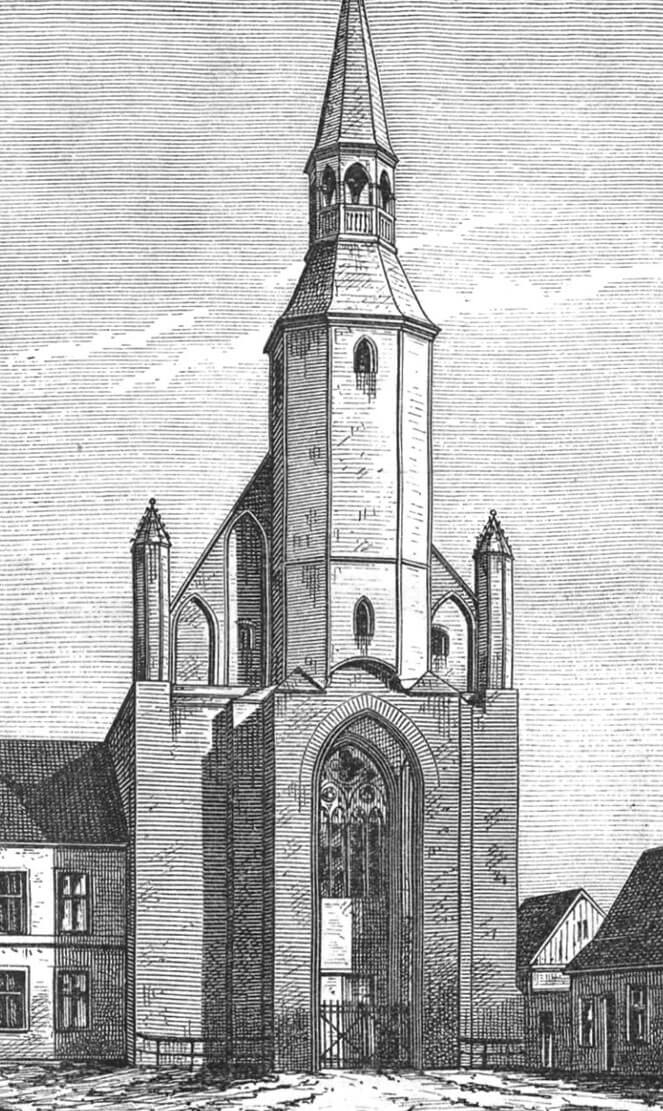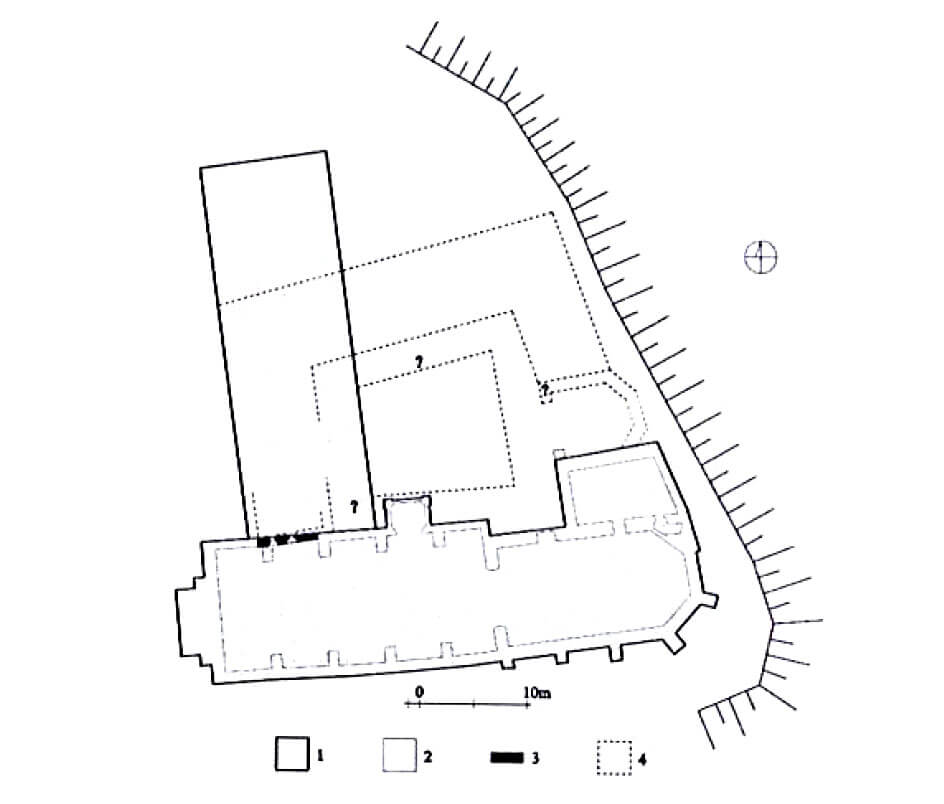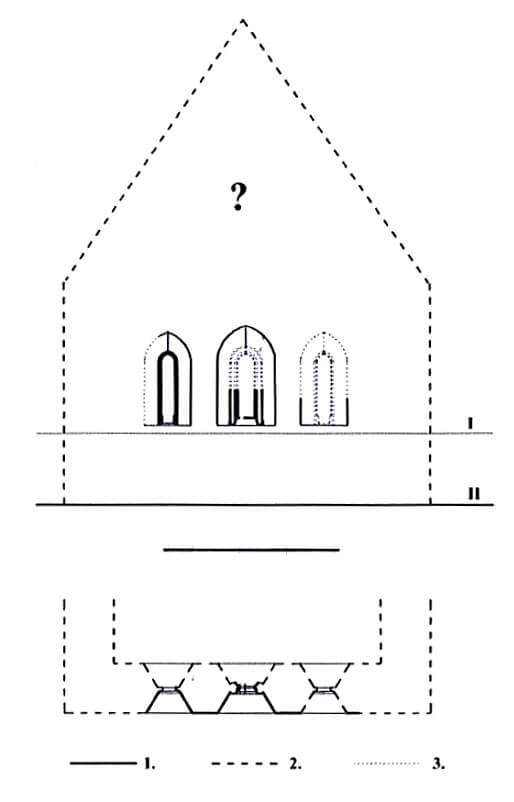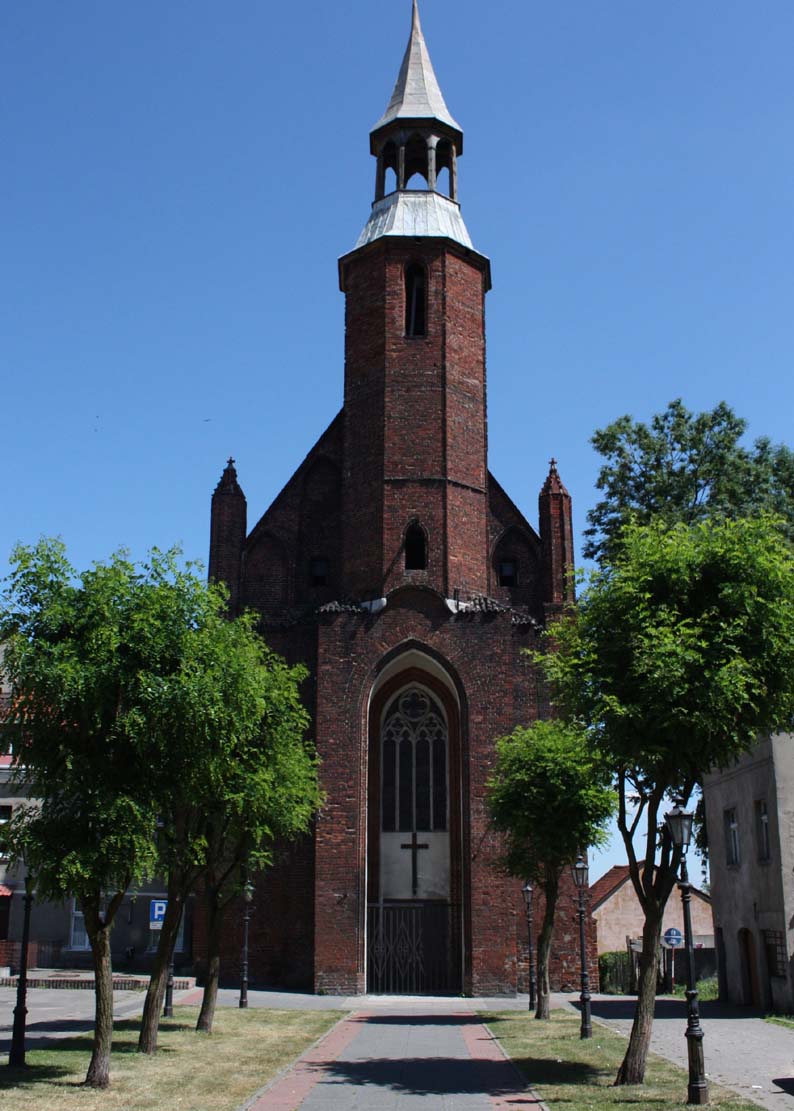History
The friary was founded in 1289 by Prince Mestwin, who brought the Dominicans to Tczew. The oldest part of the monastery church, i.e. the chancel, was probably completed before 1308, i.e. before the Teutonic Knights captured Tczew, which caused a temporary stagnation in the town’s urban development. The construction works were completed around the mid-fourteenth century. In 1577, the friary was detroyed during a town fire caused by the troops of King Stefan Batory fighting against Gdańsk. The reconstruction in the Gothic-Renaissance style was probably carried out before the end of the 16th century. After the dissolution of the Dominican community, the church with the buildings of the former claustrum were rebuilt into a school. In 1852 church was restored and was used by Evangelicals until 1945. After World War II, the church returned to Catholics.
Architecture
The Dominican friary was situated in the north-eastern part of the town, close to the defensive walls. From the west it was adjacent to the parish church, while from the east to the Low Gate, facing north, and a little further away to the Water Gate, behind which the road descended on steep slopes towards the Vistula. In the times of the Teutonic Knights, a castle was built on the eastern side of the monastery.
The friary church of the Blessed Virgin Mary was erected as an aisleless, five-bay building on a rectangular plan, with a lower, three-side ended chancel in the east and a sacristy from the north. The chancel was deviated from the axis to the south due to a break in the bulding process of the church and the presumed lack of space in the north. The total inner length of the church was 43.5 meters, with the average width of the nave 8.6 meters. The nave’s buttresses were pulled inside the walls, while the chancel was covered with buttresses from the outside. The western façade was arranged in an interesting way, similar to the St. Elizabeth church in Gdańsk. Above the narrow and shallow entrance porch there was an octagonal tower built with edges emphasized by shafts. The portal was placed in the ground floor, not in the center of the facade, but on the axis of the altar in the presbytery. In addition, the walls were pierced with pointed, high, two-side splayed windows, usually two-light, with the exception of a wider three-light east window in the chancel and a large four-light window filling the space of the open porch under the tower. The interior of the church was not originally vaulted, the stellar vaults were not established until the 16th century.
The monastery buildings were on the north side of the church. Probably their oldest part was a rectangular building located on the site of the later west wing. It was erected before the nave of the church was built, because from the south its wall was equipped with a triad of ogival windows with splayed jambs. It was probably covered with a gable roof based on triangular gables at the shorter sides. The interior may have housed the oldest refectory or confession room due to the location of the building farthest to the west, closest to the town square and parish church, while the rest of the enclosure was further back.
The remaining monastery buildings consisted of the north wing and a short east wing, facing the church with an oratory with a three-sided closure in the east, and a sacristy. The whole was probably connected by brick cloisters, separating in the middle a trapezoidal garden of the inner garth.
Current state
Until modern times, only the former friary church, now dedicated to St. Stanislaus, has retained its Gothic character, although its tower is today covered with a 19th-century cupola, and architectural details were transformed and renewed in the early modern period. The buildings of the medieval claustrum have not survived. In their place, there is now a modern school building, inside which some original details have survived (relics of the early Gothic windows triad).
bibliography:
Architektura gotycka w Polsce, red. M.Arszyński, T.Mroczko, Warszawa 1995.
Die Bau- und Kunstdenkmäler der Provinz Westpreußen, der Kreis Pr. Stargard, red. J.Heise, Danzig 1885.
Grzyb A., Strzeliński K., Najstarsze kościoły Kociewia, Starogard Gdański, 2008.
Grzybkowski A., Gotycka architektura murowana w Polsce, Warszawa 2016.
Samól P., Relikt południowej ściany wczesnogotyckiego budynku klasztornego dominikanów w Tczewie, “Biuletyn konserwatorski Pomorza Gdańskiego”, zeszyt 2, Gdańsk 2014.
